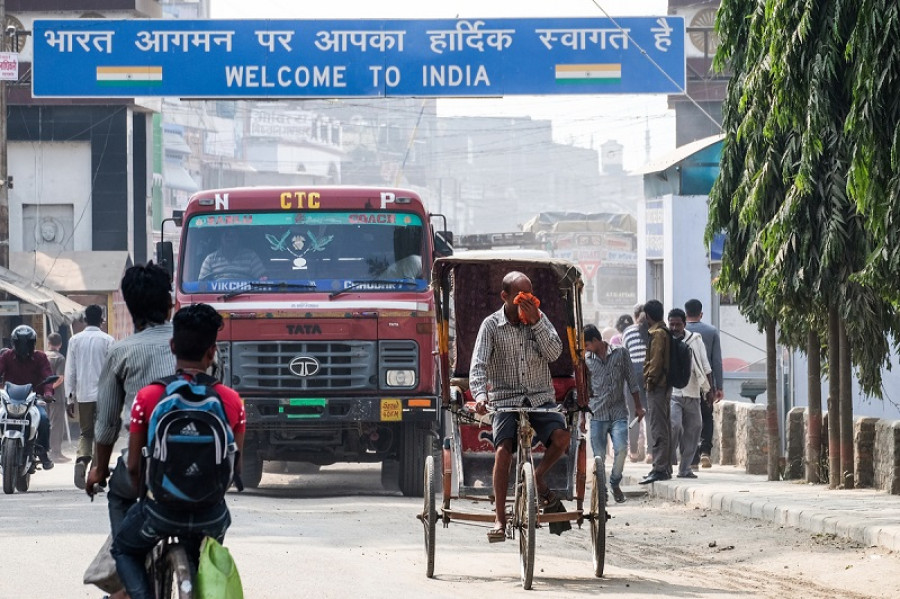Columns
Make way for connectivity projects
Nepal and India should focus more on the strategic objective of developing infrastructure.
Constantino Xavier & Riya Sinha
The year 2020 will be marked by a downturn in Nepal-India relations, with decreasing trust between Kathmandu and New Delhi after the Kalapani border dispute. While harmful, such tensions are neither new nor abnormal. In the past 20 years, bilateral relations have been mostly instable, with cyclical ups and downs. This will continue as Nepali nationalism gains ground and China increases its influence.
To insulate their relationship from this volatile political and foreign policy context, Nepal and India should focus more on the strategic objective of developing infrastructure to increase cross-border connectivity. By modernising the shabby cross-border infrastructure, Nepal and India will be indirectly investing in more stable bilateral relations. Such connectivity and interdependence will ensure that Nepal-India relations are less exposed to Kathmandu and Delhi’s ever-changing political moods.
Nepal’s ambition to become a trans-Himalayan connectivity hub depends on a favourable governance environment that welcomes foreign-funded infrastructure projects—whether from India, China, Japan, Europe, the United States or financial institutions such as the Asian Development Bank. For India, on the other hand, regional connectivity with the northern neighbours is now a double foreign policy and economic priority. Two-thirds of India’s assistance to Nepal goes to support cross-border infrastructure, including a new petroleum products pipeline and the Biratnagar integrated check post.
To improve connectivity in these borderlands, both countries will have to overcome obstacles that are delaying progress on the ground. Land acquisition has been the major point of contention. In our recent report entitled When Land Comes in the Way: India’s Connectivity Infrastructure in Nepal, we examined the Hulaki Rajmarg and the Jogbani-Biratnagar railway link as two examples where land acquisition became a major irritant in projects funded under Indian grants. First conceptualised more than 15 years ago, the Hulaki Rajmarg in the Tarai area suffered from knowledge gaps in land and road alignment, whereas compensation disputes and litigation delayed the cross-border rail link with Jogbani.
Indian officials often point fingers at a Pahadi political bias or argue that Nepali’s land acquisition process makes it impossible to implement infrastructure projects on time. On the other hand, Nepali stakeholders point out many flaws in the Indian system of development cooperation—technical limitations and lack of expertise about Nepal’s land laws and local governance.
As always, the truth lies somewhere in the middle. Nepal-India strategic connectivity projects will only succeed if both sides cooperate to address land governance-related challenges. Our report identifies the shortcomings on the Indian side and lays out various recommendations, but here we concentrate on four steps that the Nepal government could focus on.
First, the Nepal government must insulate the land acquisition process from any political or electoral pressures. Principally located in the Tarai, connectivity projects with India will require investment from the federal government in Kathmandu with active support from the provinces. Land acquisition cannot be held hostage to Kathmandu’s political calculations or varying enthusiasm. It requires a continued commitment that can only be signalled by the top leadership, without partisan bias.
Second, Nepal must upgrade its property rights framework, most notably by amending or replacing the archaic Land Acquisition Act of 1977. Despite repeated delays, the 2015 policy on land acquisition developed by the National Planning Commission has still not been enforced through legislation. The current governance framework hurts Nepal’s connectivity agenda and remains an obstacle to attracting foreign investments in critical infrastructure and transportation sectors.
Third, no land acquisition process will succeed without the active involvement of the affected people at the planning stage. Inadequate compensation is one of the biggest hindrances towards land acquisition, as seen in both our case studies, where compensation determination committees left out the project-affected families. To ensure a more participatory and transparent approach, the government could replicate the example of the Upper Tamakoshi Hydropower Project, where giving the affected landowners 25 percent of the shares of the project facilitated acquisition and compensation. Similarly, in the Chilime Hydropower Project, apart from share-holding, the local community was also given electricity at concessional rates. Similar models can be adapted to facilitate land acquisition for road and railway projects, such as land leasing, land pooling, and trust ownership of land.
Finally, and most importantly, India and Nepal must join hands in developing a stronger dialogue and mutual understanding on land governance and acquisition, whether bilaterally or regionally with other South Asian neighbours. With its own experience of digitisation of land records, India could also support Nepal in creating and maintaining a digitised land records system. This would help address Nepal’s challenges with respect to improvement in the cadastral map scaling and maintenance of land records. Nepal, on the other hand, could also share with India the best practices of land acquisition processes for projects with its other development partners, such as the Asian Development Bank or the Japan International Cooperation Agency.
***
What do you think?
Dear reader, we’d like to hear from you. We regularly publish letters to the editor on contemporary issues or direct responses to something the Post has recently published. Please send your letters to [email protected] with "Letter to the Editor" in the subject line. Please include your name, location, and a contact address so one of our editors can reach out to you.




 16.24°C Kathmandu
16.24°C Kathmandu
















